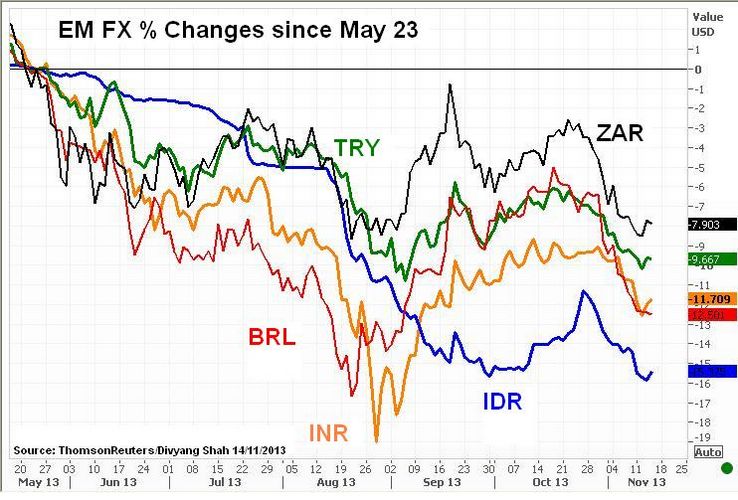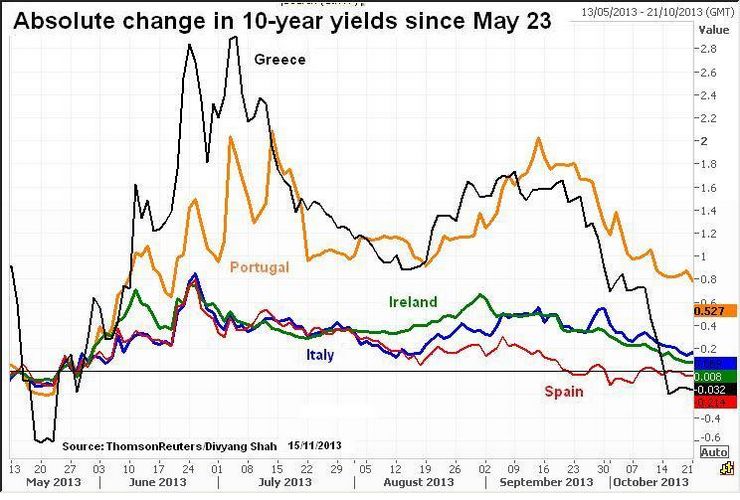
Divyang Shah, IFR Senior Strategist
The introduction of tapering risks back in May sparked a sell-off in EM FX as well as EZ peripheral debt as investors priced in the prospect of less liquidity. In recent weeks a significant divergence has opened up between the most vulnerable EM FX and peripheral debt as investors once again price in the risk that the Fed could taper as early as the December FOMC meeting. This divergence provides important insight into the way in which certain risk markets have been impacted by unconventional policy (EM) more than conventional Fed policy (peripheral debt).
The Fed sparked a rush for the exits when it introduced us to the prospect of tapering QE back in May. This hit risk markets more heavily largely due to the perception that they had benefited the most from easy Fed policy. At the front of the firing line were the most vulnerable EM most dependent on capital inflows and suffering from c/a deficits while in the EZ we saw a shift higher on peripheral bond yields.
The no-taper decision from the Fed in September and subsequent debt ceiling shenanigans in October provided some relief to both EM FX and peripheral bonds. But over the last few weeks we have seen markets adjust to the risk that the Fed could taper as early as the December FOMC meeting.
The c/a deficit EM FX currencies have seen local currencies weaken against the USD (Full Story) but what is interesting is that peripheral spreads have largely traded sideways. The difference in behaviour can be explained by the fact that the Fed has been successful in divorcing market expectations on unconventional policy from impacting expectations on conventional policy.
In the months that followed May’s speech by Bernanke we saw a steepening of money market curves as the market viewed tapering as leading to an early hike in the Fed Funds rate. The Fed has communicated that an end to QE does not mean that it will be looking to hike rates aggressively and is even contemplating lowering the unemployment threshold so as to strengthen its forward guidance (Full Story).
This is a message that seems to be understood by both the equity markets and especially the bond markets. Benchmark 10-year Treasury and bund yields have managed to stay sharply below their highs and allowed the fallout on peripheral bond markets to be contained. The c/a deficit vulnerable EM FX currencies on the other hand are reacting more to the prospect of less Fed liquidity on the back of tapering QE.
While EM are being impacted more by what happens to unconventional policy, and the speed at which the Fed tapers QE, the developed markets will be more focused on the signals the Fed sends with regards to conventional policy and the timing of the first hike on the Fed Funds rate.

